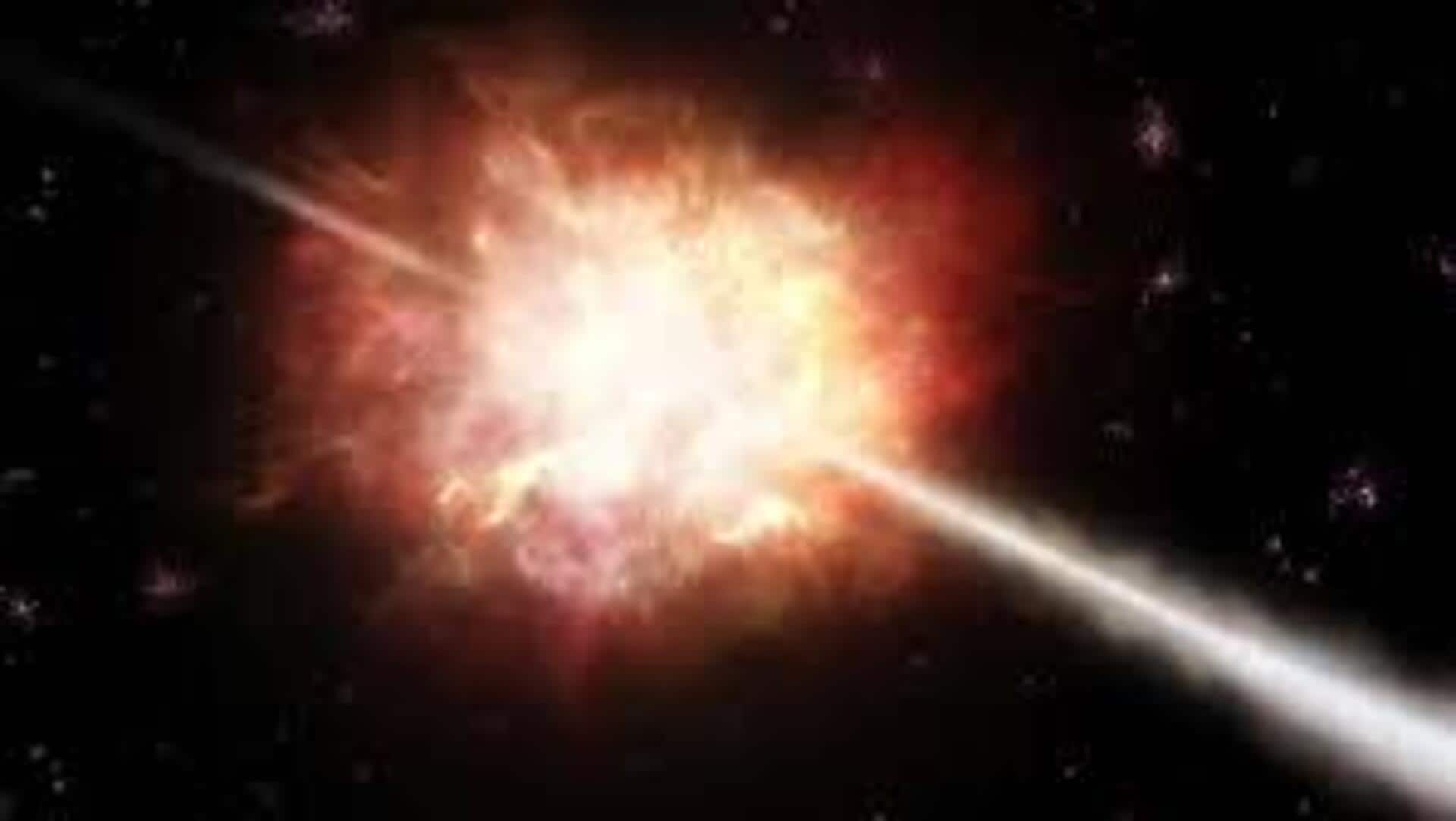
This is the longest gamma-ray burst ever recorded
What's the story
In a groundbreaking discovery, astronomers have detected the longest gamma-ray burst (GRB) ever recorded. The event, dubbed GRB 250702B, was first observed by NASA's Fermi telescope on July 2, 2025. Gamma-ray bursts are known as the universe's most powerful explosions and usually last from a few milliseconds to several minutes. They occur when a massive star's core collapses into a black hole or two compact objects merge.
Unprecedented event
GRB 250702B: A cosmic enigma
What sets GRB 250702B apart from other cosmic explosions is its duration. It kept flaring up for an entire day, a behavior not seen in normal cosmic explosions. To understand this anomaly, scientists used the James Webb Space Telescope to calculate the distance of the event. This measurement was then factored into energy calculations, revealing that GRB 250702B is actually the most energetic cosmic explosion ever recorded.
Cosmic mystery
Unusual host galaxy
The host galaxy of GRB 250702B is surprisingly large and incredibly dusty, which is unusual as GRBs usually occur in small, young star-forming galaxies. This has led scientists to believe that the environment may have played a role in creating this unusual event. The study authors suggest that either a very unusual form of a collapsing star or a black hole destroying a small star could have caused GRB 250702B.
Ongoing investigation
Implications for future research
The discovery of such an exotic GRB in an unusual galaxy has opened up new avenues for research. Scientists are now on the hunt for a hidden supernova and are also monitoring the long-term afterglow of this event. The study authors conclude, "The identification of such an exotic GRB in such an unusual galaxy raises the possibility that the environment was important in the progenitor channel creating GRB 250702B."